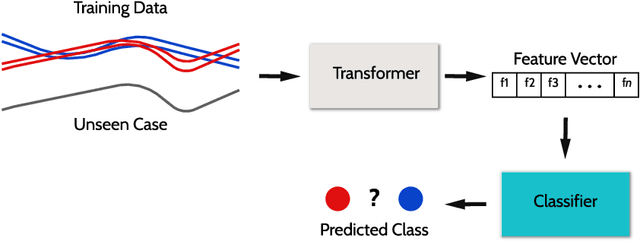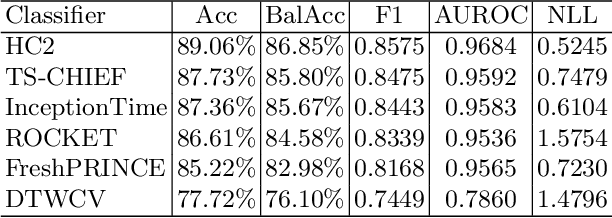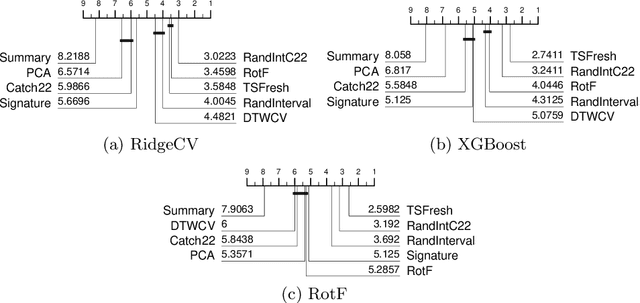The FreshPRINCE: A Simple Transformation Based Pipeline Time Series Classifier
Paper and Code
Jan 28, 2022



There have recently been significant advances in the accuracy of algorithms proposed for time series classification (TSC). However, a commonly asked question by real world practitioners and data scientists less familiar with the research topic, is whether the complexity of the algorithms considered state of the art is really necessary. Many times the first approach suggested is a simple pipeline of summary statistics or other time series feature extraction approaches such as TSFresh, which in itself is a sensible question; in publications on TSC algorithms generalised for multiple problem types, we rarely see these approaches considered or compared against. We experiment with basic feature extractors using vector based classifiers shown to be effective with continuous attributes in current state-of-the-art time series classifiers. We test these approaches on the UCR time series dataset archive, looking to see if TSC literature has overlooked the effectiveness of these approaches. We find that a pipeline of TSFresh followed by a rotation forest classifier, which we name FreshPRINCE, performs best. It is not state of the art, but it is significantly more accurate than nearest neighbour with dynamic time warping, and represents a reasonable benchmark for future comparison.
 Add to Chrome
Add to Chrome Add to Firefox
Add to Firefox Add to Edge
Add to Edge